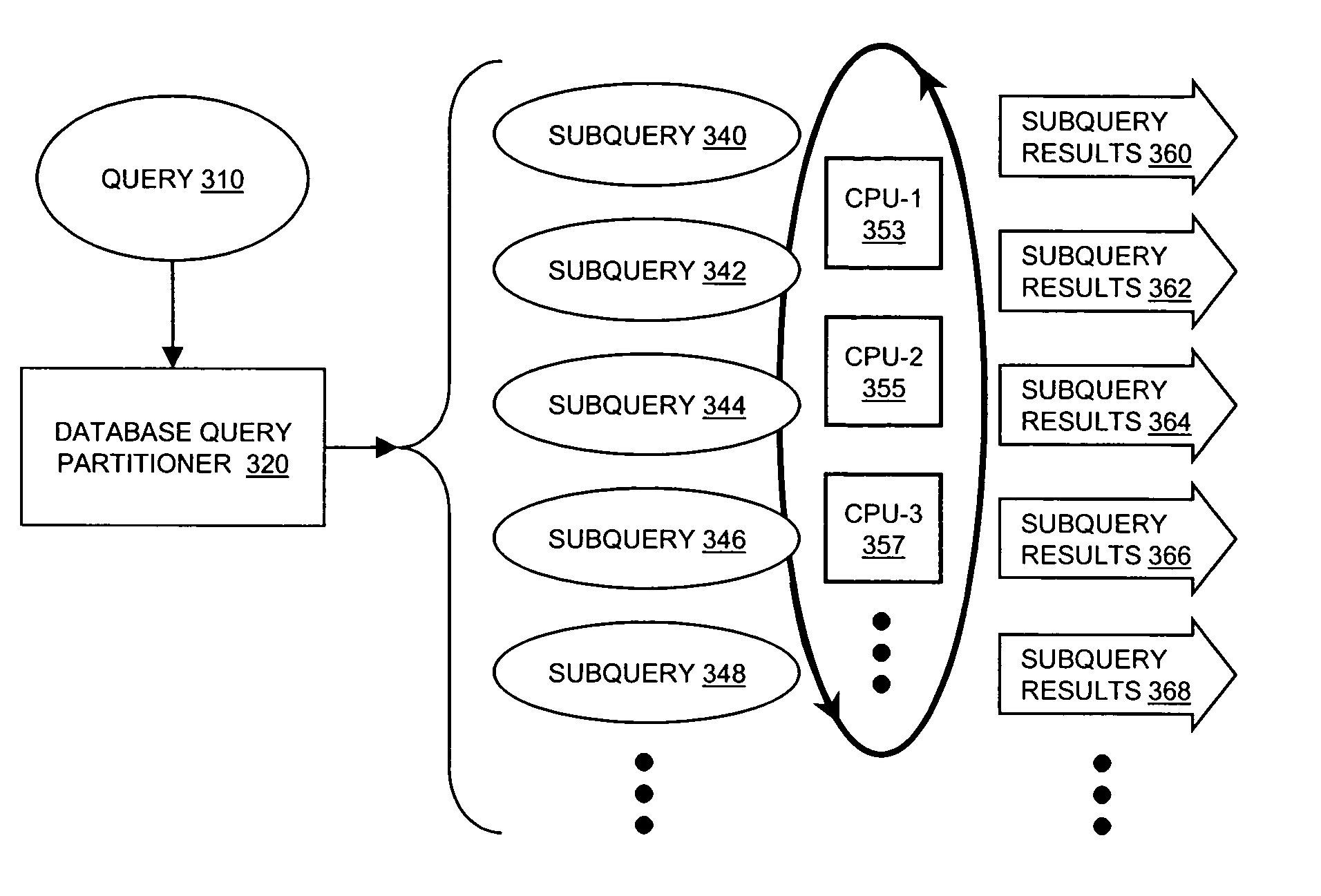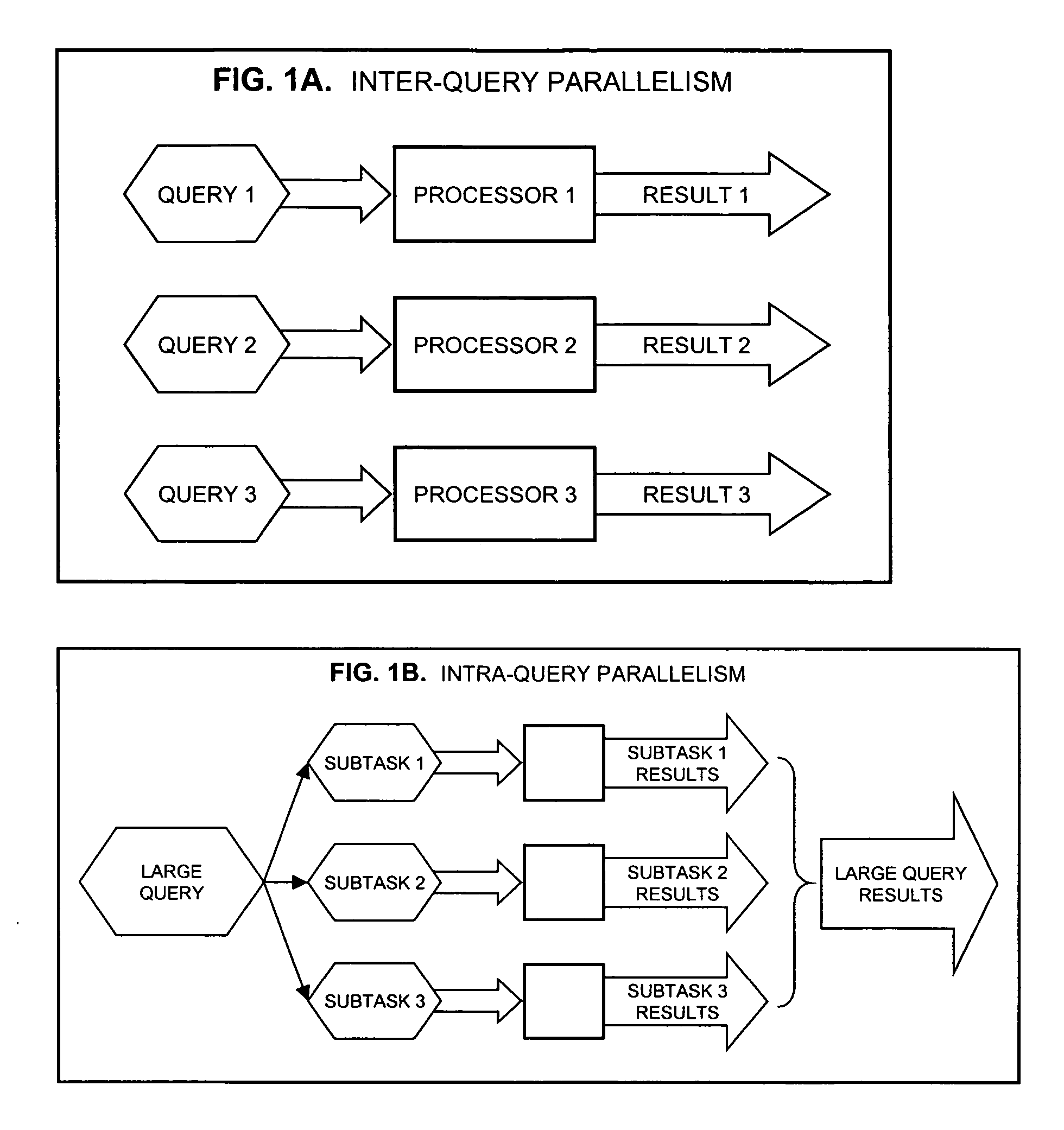Database early parallelism method and system
a database and parallelism technology, applied in the field of database processing, can solve the problems of no longer unusual for a dbms to manage databases, the speed limit of any single device can not be exceeded, and the switch times and integration densities are not easy to achiev
- Summary
- Abstract
- Description
- Claims
- Application Information
AI Technical Summary
Problems solved by technology
Method used
Image
Examples
Embodiment Construction
[0029] Embodiments of the present invention will be described with reference to the accompanying drawings, wherein like parts are designated by like reference numerals throughout, and wherein the leftmost digit of each reference number refers to the drawing number of the figure in which the referenced part first appears.
[0030]FIG. 3 is a process diagram illustrating parallelization of a database query by a database query partitioner, according to an embodiment of the present invention. As shown in FIG. 3, database query partitioner 320 may accept a database query 310 from other resources in a computing system (not shown). As is known, a database query may be issued from many different sources. Examples of query issuing sources include application software programs executing on a local computer, application software programs executing on a remote computer connected to the local computer via a network or interface bus, operating system software executing on a local or remote computer...
PUM
 Login to View More
Login to View More Abstract
Description
Claims
Application Information
 Login to View More
Login to View More - R&D
- Intellectual Property
- Life Sciences
- Materials
- Tech Scout
- Unparalleled Data Quality
- Higher Quality Content
- 60% Fewer Hallucinations
Browse by: Latest US Patents, China's latest patents, Technical Efficacy Thesaurus, Application Domain, Technology Topic, Popular Technical Reports.
© 2025 PatSnap. All rights reserved.Legal|Privacy policy|Modern Slavery Act Transparency Statement|Sitemap|About US| Contact US: help@patsnap.com



